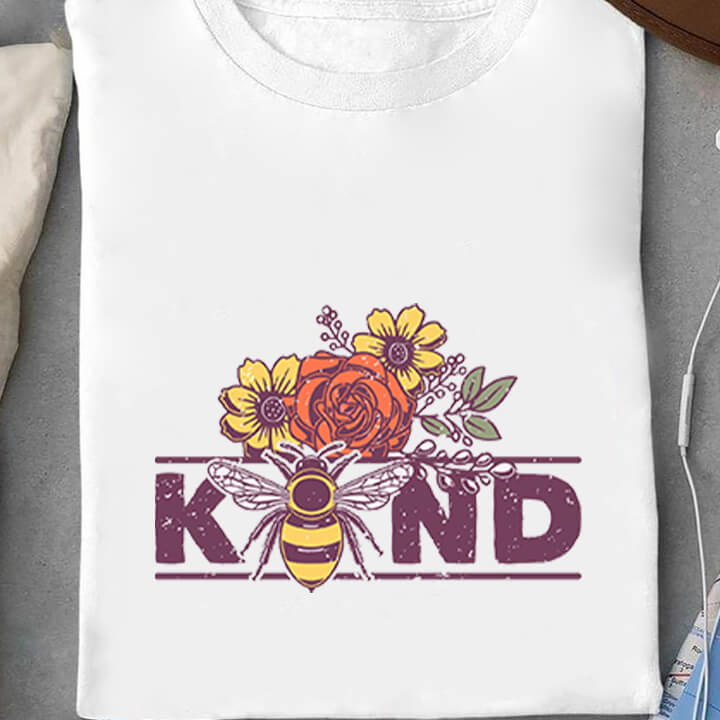Bee Kind: The Importance of Protecting Bees and Promoting Bee-Friendly Practices

Table of Contents
- Introduction
- Why Bees Matter
- The Decline of Bee Populations
- Impacts of Bee Decline on Ecosystems and Agriculture
- Ecosystem Pollination Services
- Example: The Role of Bees in Pollinating Wildflowers in a Forest Ecosystem
Introduction
Bees are not just tiny insects buzzing around flowers; they play a crucial role in our ecosystem and food production. These industrious pollinators are responsible for the reproduction of numerous plant species, including many fruits, vegetables, and nuts that make up a significant portion of our diet. However, bee populations worldwide have been declining at an alarming rate due to various factors such as habitat loss, pesticide use, climate change, and diseases.
In this article, we will explore why bees matter to us and the environment. We will delve into the reasons behind the decline in bee populations and discuss the impacts it has on ecosystems and agriculture. Furthermore, we will provide valuable insights and practical tips on how individuals, communities, and businesses can contribute to bee conservation efforts by adopting bee-friendly practices.
Why Bees Matter
Bees are essential pollinators that facilitate the reproduction of flowering plants by transferring pollen from the male parts (anthers) to the female parts (stigma) of flowers. This process leads to fertilization and the production of seeds or fruits. Approximately 75% of all flowering plants rely on animal pollinators like bees for successful reproduction.
The importance of bees in our lives goes beyond their role as pollinators. Here are some key reasons why bees matter:
1. Food Production: Bees play a vital role in agriculture by pollinating crops such as apples, almonds, blueberries, cucumbers, and many more. Without bees’ pollination services, these crops would have reduced yields or fail altogether.
2. Biodiversity: Bees contribute to biodiversity by facilitating plant reproduction and promoting genetic diversity within plant populations.
3. Ecosystem Health: Bees are crucial for maintaining healthy ecosystems as they support the growth and survival of various plant species that provide food and habitat for other wildlife.
4. Economic Value: The economic value of bee-pollinated crops is significant worldwide, contributing billions of dollars annually to agricultural economies.
The Decline of Bee Populations
Over the past few decades, there has been a concerning decline in bee populations globally. This decline is attributed to several factors:
1. Habitat Loss: Destruction and fragmentation of natural habitats due to urbanization, intensive agriculture practices, deforestation, and land conversion have limited suitable nesting sites for bees and reduced the availability of diverse forage plants.
2. Pesticide Use: The widespread use of pesticides, particularly neonicotinoids, has been linked to bee declines. These chemicals can be toxic to bees, affecting their behavior, reproduction, and immune systems.
3. Climate Change: Changing climatic conditions such as extreme weather events and shifts in flowering times disrupt the synchronization between bees and their floral resources.
4. Diseases and Parasites: Bees face various diseases and parasites that weaken their immune systems and contribute to population declines. Varroa mites, for example, are a significant threat to honeybees worldwide.
Impacts of Bee Decline on Ecosystems and Agriculture
The decline in bee populations has far-reaching consequences for both ecosystems and agriculture:
Ecosystem Pollination Services
Bees are crucial pollinators not only for agricultural crops but also for wildflowers in natural ecosystems. Their pollination services support biodiversity by enabling the reproduction of numerous plant species that provide food sources (nectar) or habitat (pollen) for other animals.
For example: In a forest ecosystem, bees play a vital role in pollinating wildflowers that carpet the forest floor during springtime. These flowers provide essential nectar resources for butterflies, beetles, hummingbirds, bats, and other insects while serving as host plants for caterpillars or nesting sites for ground-nesting bees.
By promoting bee-friendly practices such as planting native wildflowers or reducing pesticide use near natural habitats like forests or meadows, we can help maintain healthy ecosystems with thriving plant communities supporting diverse wildlife populations.
Example: The Role of Bees in Pollinating Wildflowers in a Forest Ecosystem
In a study conducted in a temperate forest, researchers found that bees were the primary pollinators for 80% of the wildflower species surveyed. These wildflowers included trilliums, violets, and bloodroots, which are important early spring nectar sources for bees emerging from hibernation.
The researchers observed that bee abundance and diversity positively correlated with the number of flowers visited and seed set (the number of seeds produced per flower). This indicates that bees play a crucial role in maintaining plant populations and genetic diversity within the forest ecosystem.
By protecting bee populations and their habitats, we can ensure the continued pollination services they provide to maintain healthy ecosystems worldwide.
Bee-Friendly Practices: How You Can Make a Difference
Individuals, communities, and businesses can contribute to bee conservation efforts by adopting bee-friendly practices. Here are some practical tips:
1. Plant Bee-Friendly Gardens: Choose native plants that provide nectar and pollen throughout the year. Aim for a variety of flower shapes, colors, and sizes to attract different bee species. Avoid using pesticides or opt for organic alternatives.
2. Create Bee Nesting Sites: Provide nesting opportunities by leaving patches of bare ground or creating artificial nests such as wooden blocks with drilled holes or bundles of hollow stems.
3. Support Local Beekeepers: Buy honey from local beekeepers who practice sustainable beekeeping methods. This supports their livelihoods while promoting healthy honeybee populations.
4. Educate Others: Spread awareness about the importance of bees through educational initiatives at schools or community events. Encourage others to take action by sharing information on social media platforms or organizing workshops on bee-friendly practices.
5. Let’s Get Trashed: Support sustainable alternatives to single-use plastic products by switching to eco-friendly options like reusable beeswax wraps. These wraps are a great alternative to plastic cling wrap and help reduce plastic waste that harms the environment.
By incorporating these bee-friendly practices into our daily lives, we can collectively make a significant impact on bee conservation and ensure the continued well-being of these vital pollinators.
Summary
Bees play an indispensable role in our ecosystem and food production as essential pollinators. However, their populations have been declining due to habitat loss, pesticide use, climate change, and diseases. The decline of bees has far-reaching impacts on ecosystems and agriculture, affecting biodiversity, food security, and economic value.
To protect bees and promote their well-being, it is crucial for individuals, communities, and businesses to adopt bee-friendly practices. Planting native wildflowers in gardens or creating nesting sites for bees are simple yet effective ways to support their populations. Supporting local beekeepers who practice sustainable methods also contributes to honeybee conservation efforts.
By taking action today through small changes in our daily lives such as using eco-friendly alternatives like reusable beeswax wraps instead of single-use plastics (e.g., Let’s Get Trashed), we can collectively make a significant difference in preserving bee populations for future generations.
Q&A
Q1: Why are bees important for food production?
A1: Bees are crucial for food production because they facilitate the pollination of many crops that make up a significant portion of our diet. Without their pollination services, crop yields would be reduced or fail altogether.
Q2: How do pesticides affect bees?
A2: Pesticides, particularly neonicotinoids, can be toxic to bees. They affect bees’ behavior, reproduction, and immune systems, contributing to population declines.
Q3: What can individuals do to help protect bees?
A3: Individuals can help protect bees by planting bee-friendly gardens with native plants, creating nesting sites for bees, supporting local beekeepers who practice sustainable methods, and spreading awareness about the importance of bees.
Common FAQ
Q1: How can I attract more bees to my garden?
A1: To attract more bees to your garden, choose native plants that provide nectar and pollen throughout the year. Aim for a variety of flower shapes and colors. Avoid using pesticides or opt for organic alternatives.
Q2: Are all types of bees declining in population?
A2: While honeybee populations have received significant attention due to their economic importance in agriculture, many wild bee species are also experiencing declines. It is essential to protect all types of bee populations for ecosystem health and biodiversity.
Remember that every small action counts when it comes to protecting our precious pollinators. Let’s be kind to the bees and create a future where they thrive alongside us!

This article was brought to you by Ettee, promoting sustainable alternatives like reusable Beeswax Wraps.


 [/accordion-item]
[/accordion-item]





 Proudly manufactured in the USA. Experience the exceptional quality and craftsmanship that comes with American production.
Proudly manufactured in the USA. Experience the exceptional quality and craftsmanship that comes with American production.





































